1,000 Graphic Elements : Special Details for Distinctive Designs
Wilson Harvey
Often, the small, delightful details make a piece shine, similar to the way unique buttons on a white shirt can give it an entirely new look. This book explores 1,000 of these embellishments available to graphic designers across all kinds of projects, from books to brochures, invitations to menus, CDs to annual reports.
Exacting photography, which is accompanied by credits outlining the vendors and materials used, focuses on these details. This book invites designers to literally shop for ideas. Content is organized by type; if you?re in the market for an unusual binding, turn to the bindings section to see a wide collection of fresh ideas.
Other topics covered include fasteners, graphics, unique materials, embossing, debossing, specialty inks, type treatments, interesting color usage, add-ons, die cuts, and much more.
159253077X
1,000 Type Treatments: From Script to Serif, Letterforms Used to Perfection
Wilson Harvey
The ability to wield typography is one of those things that is a clear indication of a talented designer. Being able to craft type well and thoughtfully takes a deep understanding of the inherent complexities and a keen eye for the minute and subtle details. This book contains a collection of 1,000 instances of thoughtful type usage along with credits that note what fonts were used in the design. Like its predecessor, 1,000 Graphic Elements, the photography in this book focuses in on the typography so readers can get an up-close look at the work.
1,000 Type Treatments showcases an array of fonts in a catalog-like format, making it easy for the working designer to practically shop for ideas. The book is organized by style so if a designer has a traditional, elegant, or edgy piece, they can go directly to that section of the book, where they will find a wide collection of fresh ideas in the style they are seeking.
Also included is a directory of font foundries and suppliers, providing busy designers with a quick reference guide to where they can find the fonts that pique their interest.
1592531598
A Field Guide to Sprawl
Dolores Hayden
A visual lexicon of the colorful slang, from alligator investment to zoomburb, that defines sprawl in America. "May well establish Ms. Hayden as the Roger Tory Peterson of Sprawl."—New York Times
Duck, ruburb, tower farm, big box, and pig-in-a-python are among the dozens of zany terms invented by real estate developers and designers today to characterize land-use practices and the physical elements of sprawl. Sprawl in the environment, based on the metaphor of a person spread out, is hard to define. This concise book engages its meaning, explains common building patterns, and illustrates the visual culture of sprawl. Seventy-five stunning color aerial photographs, each paired with a definition, convey the impact of excessive development. This "engagingly organized and splendidly photographed" (Wall Street Journal) book provides the verbal and visual vocabulary needed by professionals, public officials, and citizens to critique uncontrolled growth in the American landscape. 75 color photographs.
0393731987
Infrastructure: A Field Guide to the Industrial Landscape
Brian Hayes
We are surrounded by the hardware of the modern world, but how much of it do we even notice, much less understand? This unique and fascinating book covers the parts of the landscape that are often overlooked despite their ubiquity—objects such as utility poles, power lines, cell phone towers, highway overpasses, railroad tracks, factories, and other man-made mechanical marvels. And they are not just in urban areas, but include out of the way "ecosystems" such as mines, dams, wind farms, power plants, grain operators, steel mills, and oil refineries. In Infrastructure, Brian Hayes offers clear explanations of the systems that keep the modern world running, including agriculture, energy supplies, shipping, air transportation, and the various ingenious methods of recycling and managing the waste we generate.
Subtitled "A Field Guide to the Industrial Landscape," the book is laid out like a nature guide, with comprehensive details and photographs on every page. "There can be just as much of interest happening on a factory rooftop as there is in the forest canopy, just as much to marvel at in the operation of a strip-mining dragline as in the geological carving of a river canyon," writes Hayes. A mine may not be as scenic as a mountain peak, but he argues it can hold as much fascination. His "chief aim is simply to describe and explain the technological fabric of society, not to judge whether it is good or bad, beautiful or ugly." In this he does an impressive job. He tells us how things work and why they are located where they are, and answers dozens of practical questions in the process. He also walks us through how raw materials such as coal, timber, petroleum, and water are converted and transported for use in our homes and businesses. Readers won't view the industrial landscape that same way after poring over this remarkable book. —Shawn Carkonen
0393059979
When Information Came of Age : Technologies of Knowledge in the Age of Reason and Revolution, 1700-1850
Daniel R. Headrick
Although the Information Age is often described as a new era, a cultural leap springing directly from the invention of modern computers, it is simply the latest step in a long cultural process. Its conceptual roots stretch back to the profound changes that occurred during the Age of Reason and
Revolution. When Information Came of Age argues that the key to the present era lies in understanding the systems developed in the eighteenth and early nineteenth centuries to gather, store, transform, display, and communicate information.
The book provides a concise and readable survey of the many conceptual developments between 1700 and 1850 and draws connections to leading technologies of today. It documents three breakthroughs in information systems that date to the period: the classification and nomenclature of Linnaeus, the
chemical system devised by Lavoisier, and the metric system. It shows how eighteenth-century political arithmeticians and demographers pioneered statistics and graphs as a means for presenting data succinctly and visually. It describes the transformation of cartography from art to science as it
incorporated new methods for determining longitude at sea and new data on the measure the arc of the meridian on land. Finally, it looks at the early steps in codifying and transmitting information, including the development of dictionaries, the invention of semaphore telegraphs and naval flag
signaling, and the conceptual changes in the use and purpose of postal services.
When Information Came of Age shows that like the roots of democracy and industrialization, the foundations of the Information Age were built in the eighteenth and early nineteenth century.
0195153731
|
The Resonant Interface: HCI Foundations for Interaction Design
Steven Heim
In an age of ubiquitous computing it is essential that Interaction Design be based on the rich foundation of HCI research and knowledge. The Resonant Interface does that and more. It moves beyond the traditional scope of human-computer interaction (HCI) and is based on the concept of active learning that integrates theory and practice.
Using Computers: Interaction Paradigms; Interaction Frameworks and Styles. Designing Interaction: Interaction Design Process; Discovery; Design; Design Principles; Interaction Design Models; Usability Testing. Facets of Interaction: Color; Interface Components; Icons; Text; Speech and Hearing; Touch and Movement.
For all readers interested in human-computer interaction (HCI).
0321375963
Sins of the City: The Real Los Angeles Noir
Jim Heimann
In the first half of the 20th century, Los Angeles was as well known for its lurid nightlife and criminal underground as it was for the Hollywood film empire. Often, of course, the two sides of L.A. met, as when Robert Mitchum was busted for marijuana possession in 1949; among the photos collected in Sins of the Cityyou'll find a snapshot of Mitchum in prison gear during his 50-day incarceration. You'll also find several pictures of local crime boss Mickey Cohen and his gang, usually after somebody's made an attempt to rub them out. Several of the crime scene photos are not for the squeamish, including the shooting death of mobster Bugsy Siegel and the discovery of both halves of the body of Elizabeth Short, better remembered as the "Black Dahlia." (Actually, the two pictures of Short's bisected corpse are taken from a distance, compared to more gruesome photos of that scene found in other sources.)
Jim Heimann's introduction provides some historical context, but it's the photos themselves that are the real attraction here. From them you'll get a sense of what the gambling parlors, speakeasies, and drag balls of the period looked like—as well as Beverly Hills movie premieres, the back alleys of Chinatown, and the exteriors of such swank nightclubs as La Conga and the Mocambo. Sins of the Cityis fascinating reference material for readers of classic L.A. noir(it includes quotes from several authors, among them Raymond Chandler and John Fante), as well as anyone interested in studying or writing about this period.
0811823199
Shop America: Mid-Century Storefront Design, 1938-1950
Jim Heimann
Window shopping
In postwar America, everything pointed to a bright, shiny future. Sheer optimism and opulence informed everything from automobile design to architecture, infusing design with larger-than-life planes and curves. Storefront design of the era is particularly indicative of this phenomenon, incarnated here in an extensive collection of hand-illustrated shop window designs from 1938 to 1950. These spectacular, often grandiose plans for grocery stores, shoe shops, beauty salons, bakeries, and more are reminders of a time when stores were sacred shrines for the congregation of American shoppers—impressive and even slightly intimidating, just like the future itself. Collected for this unique book, the designs viewed in retrospect reveal the mindset of a unique period in history. In addition to an extensive selection of drawings are historical black and white photographs of actual shops built in a similar style. Shop America offers a rare look at mid-century commercial America as it pictured itself.
3822842699
The Sixteen Pleasures: A Novel
ROBERT HELLENGA
In 1966, 29-year-old Margot Harrington heads off to Florence, intent on doing her bit to protect its precious books from the great floods—and equally intent on adventure. Serendipity, in the shape of the man she'll fall in love with, leads her to an abbey run by the most knowing of abbesses and work on its library begins. One day a nun comes upon a shockingly pornographic volume, bound with a prayer book. It turns out to be Aretino's lost erotic sonnets, accompanied by some rather anatomical engravings. Since the pope had ordered all copies of the Sixteen Pleasuresburned, it could be worth a fortune and keep the convent autonomous. The abbess asks Margot to take care of the book and check into its worth: "We have to be cunning as serpents and innocent as doves," she warns.
Soon our heroine finds her identity increasingly "tangled up" with the volume and with Dottor Postiglione, a man with an instinct for happiness—but also one for self-preservation. Margot enjoys the secrecy and the craft (the chapters in which she rebinds the folios are among the book's finest). Much of the book's pleasure stems from Robert Hellenga's easy knowledge, which extends to Italian complexities. Where else would you learn that, in cases of impotence, legal depositions are insufficient: "Modern couples often take the precaution of sending postcards to each other from the time of their engagement, leaving the message space blank so that it can be filled in later if the couple wishes to establish grounds for an annulment." Luckily, however, there are also shops that sell old postcards, "along with the appropriate writing instruments and inks."
Though The Sixteen Pleasuresis initially in the tradition of American innocent goes abroad to encounter European experience, Hellenga's depth (and lightness) of characterization and description lift it high above its genre. And what better book than one about loving and loving books?
0385314698
|
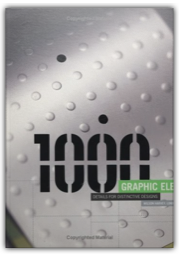
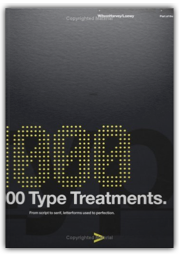

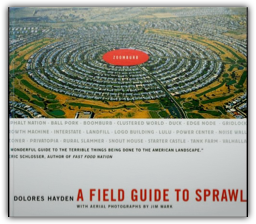

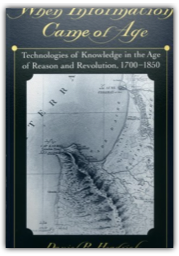
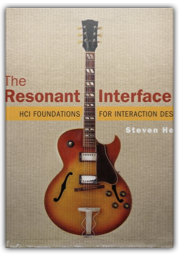
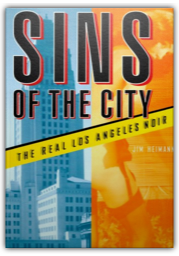
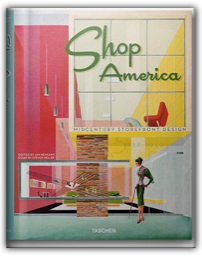
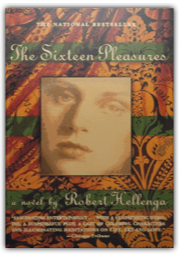


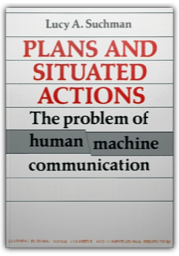
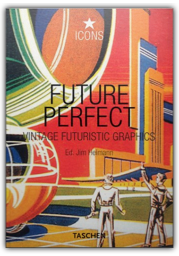
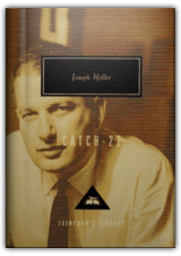
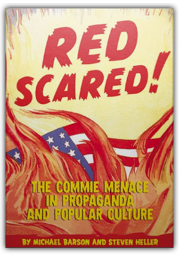
 Made with Delicious Library
Made with Delicious Library